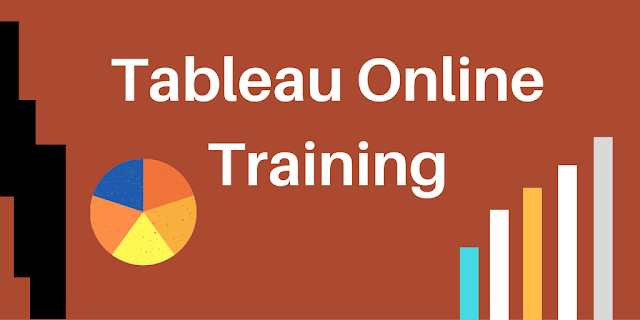Tableau Online Training
The Course goes with the aim to grasp key ideas about:
Join Tableau Free Demo NOW!!!
This course is meant for the beginner to intermediate-level Tableau user. it's for anyone UN agency works with information – notwithstanding technical or analytical background. This course is meant to assist you perceive the vital ideas and techniques employed in Tableau to maneuver from straightforward to complicated visualizations and learn the way to mix them in interactive dashboards.
Course Objective outline
• perceive the various choices for connecting to information
• perceive the Tableau interface / paradigm – elements, shelves, information components, and nomenclature.
• the coed are going to be able to use this information to effectively produce the foremost Powerful visualizations.
• produce basic calculations together with string manipulation, basic arithmetic calculations, custom Aggregations and ratios, date math, logic statements and fast table calculations
• able to represent your information victimisation the subsequent mental image types:
• Cross Tab
• Geographic Map
• Page Trails
• Heat Map
• Density Chart
• Scatter Plots
• chart and Bar Charts
• little Multiples
• twin Axis and dance orchestra Charts with totally different mark varieties
• choices for drill down and drill across
• Use Trend Lines, Reference Lines and applied math techniques to explain your information
• Understanding a way to use cluster, bin, hierarchy, sort, set and filter choices effectively
• Work with the various info choices to fine tune the presentation of your visualizations
• perceive however and once to Use live Name and live price
• perceive a way to manage information changes in your information supply like field addition, deletion or Name amendment
• perceive all of your choices for sharing your visualizations with others
• mix your visualizations into Interactive Dashboards and publish them to the online
The Course goes with the aim to grasp key ideas about:
- Build experience in building charts and information visualizations
- Formulate complicated calculations to arrange and manipulate information
- victimization applied math techniques to gift information
- victimization parameters to regulate the input and regulate the outputs
- To surpass within the short cut ways which will improve the potency
- Understanding the Tableau sever and grasp to share the leads to a timely fashion
- Learn victimization and death penalty the Dashboards for information visualisation
- To handle the Tableau interface for attaining regularised handling for numerous tasks
Join Tableau Free Demo NOW!!!
This course is meant for the beginner to intermediate-level Tableau user. it's for anyone UN agency works with information – notwithstanding technical or analytical background. This course is meant to assist you perceive the vital ideas and techniques employed in Tableau to maneuver from straightforward to complicated visualizations and learn the way to mix them in interactive dashboards.
Course Objective outline
• perceive the various choices for connecting to information
• perceive the Tableau interface / paradigm – elements, shelves, information components, and nomenclature.
• the coed are going to be able to use this information to effectively produce the foremost Powerful visualizations.
• produce basic calculations together with string manipulation, basic arithmetic calculations, custom Aggregations and ratios, date math, logic statements and fast table calculations
• able to represent your information victimisation the subsequent mental image types:
• Cross Tab
• Geographic Map
• Page Trails
• Heat Map
• Density Chart
• Scatter Plots
• chart and Bar Charts
• little Multiples
• twin Axis and dance orchestra Charts with totally different mark varieties
• choices for drill down and drill across
• Use Trend Lines, Reference Lines and applied math techniques to explain your information
• Understanding a way to use cluster, bin, hierarchy, sort, set and filter choices effectively
• Work with the various info choices to fine tune the presentation of your visualizations
• perceive however and once to Use live Name and live price
• perceive a way to manage information changes in your information supply like field addition, deletion or Name amendment
• perceive all of your choices for sharing your visualizations with others
• mix your visualizations into Interactive Dashboards and publish them to the online
